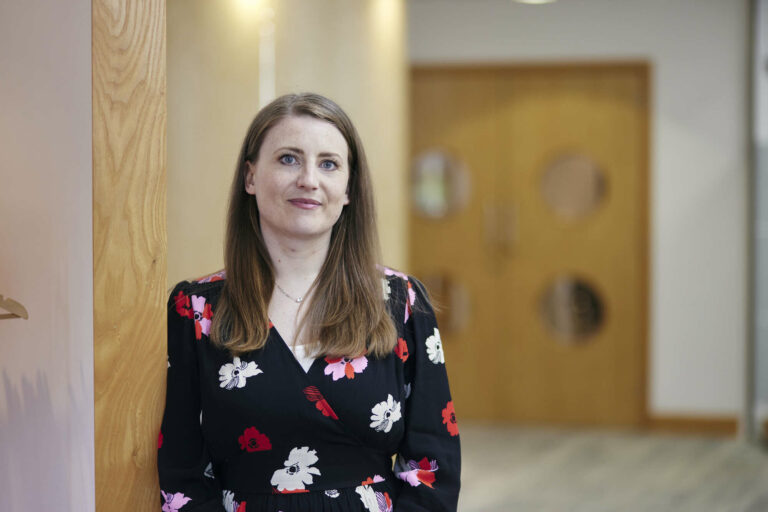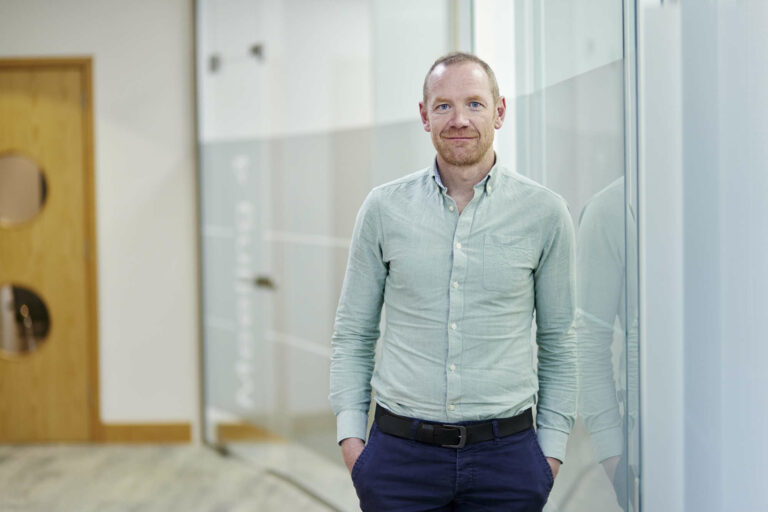
Claire Leslie, Legal Director in our Medical Negligence Team has many years of experience supporting families whose lives have been affected by tethered spinal cord syndrome (TSCS). This is common in children with Spina Bifida although it also occurs in children who do not have this condition.
This week is Spina Bifida Awareness Week, and our charity partner Shine is using it as an opportunity to raise awareness about the lives of people affected by spina bifida, the support they provide as a charity and ways our communities can get involved to provide help and support.
WHAT IS TETHERED SPINAL CORD SYNDROME?
Tethered spinal cord is a neurological condition where the spinal cord is attached to the tissue around the spinal canal limiting its movement.
This mostly happens in children because it occurs during their development in the womb. Other causes can be spinal surgery or trauma, but in this article we’ll focus on children born with tethered spinal cords.
As a child grows, problems can emerge because the nerves controlling body parts like the legs, bladder, and bowels are attached to this tissue and get stretched. With growth, the nerves stretch more, blood supply is reduced, and this can harm the parts of the body they connect to.
For instance, if the cord is tethered near the bladder nerves, it can lead to issues like incontinence, trouble emptying the bladder, or spasms. If the leg nerves are affected, it can cause leg pain and weakness. The longer this issue persists, the more severe the damage can become.
What is the link between spina bifida and medical negligence?
In many of our cases babies born with spina bifida are born with marks on the base of their spine. These can sometimes look like a hole (a dimple) or like raised red marks otherwise called ‘strawberry marks’ or a haemangioma.
Even though being born with a tethered spinal cord is not generally linked to medical negligence we unfortunately often see cases where doctors may have observed a baby having a strawberry mark or sacral dimple but not properly investigated it leading to a delayed diagnosis of the condition that can cause long lasting effects to the child.
When doctors or midwives correctly identify these marks quickly after the baby is born, they generally investigate them further. Such investigations include getting an ultrasound scan or an MRI which can show if the spinal cord is tethered. Where a baby has a tethered spinal cord it will be regularly reviewed by neurosurgeons and urologists so if they develop any problems in their development they can arrange for them to have surgery to de-tether the cord.
The guidance for doctors says that if a baby or child has a mark (which could be a dimple, a tuft of hair, a fold of skin or a strawberry mark) on the base of their spine – which in medical terms is called the sacrum – they should be scanned because there is a risk that it could be spina bifida. If a child is scanned and the cord is tethered, then it is more likely than not that the tethered cord will be identified even at birth. The sooner a tethered spinal cord is identified, the higher the chances that any corrective surgery needed will be able to prevent the child from having significant issues affecting their mobility, continence and sexual function as an adult.
What are the effects of a late diagnosis?
Claire Leslie and her team specialise in investigating TSCS and spina bifida related claims to help families understand if something went wrong with the care their child received and if so enable them to access compensation and support to get the best possible therapies and equipment in place to help with their child’s development.
As we mentioned above the most common negligence around spina bifida is where a doctor or nurse have recognised a mark indicating the possibility of spina bifida or tethered cord but decided not to investigate further, or have failed to recognise the mark at all when they should have done. When this happens children may go undiagnosed for many years as some of the symptoms may not be recognised until they are a bit older. For example one of our clients was 8 years old before he started showing symptoms as until this point the nerves surrounding the spinal cord had not been affected to the extent that the damage impacted his walking and bladder control.
An early diagnosis of a tethered spinal cord is important because it gives surgeons the opportunity to monitor development, to observe any symptoms early on and the chance to de-tether the nerves which can prevent any further deterioration.
Unfortunately when spina bifida is diagnosed late it often means that the reason it got diagnosed in the first place is because there has been lasting damage caused to those nerves surrounding the spinal cord that is irreversible. At this stage de-tethering the cord can still leave a child with lifelong disabilities.
WHAT DIFFERENCE WILL A CLAIM MAKE?
A successful clinical negligence claim can only provide financial compensation, but as a firm we work with our clients to help them get answers about what went wrong, and what the future holds for them.
The point of making a claim is to enable families to put in place measures to support their child in the long term so their future will be as little affected as possible by the long term effects of their injury. It also means that the individual with spinal bifida can access additional therapies including the support of specialised physiotherapy and other forms of rehabilitation that will help them limit the effects of their injury.
What should I do if I think my child or I may have Spina Bifida?
If you are worried that you or a loved one could have a tethered spinal cord, it is important to get a diagnosis as soon as possible. Speak to your GP, explain why you think there is a risk and ask for a referral for a scan.
Shine, our charity partner
Shine are a charity which helps people with spina bifida and their families. Their website contains a lot of resources which can help you find out more about spina bifida, and by joining you’ll get access to local and national support groups.
We’ve partnered with Shine so that we can both find more ways to help families affected by spina bifida negligence.
LEGAL EXPERTS IN TETHERED SPINAL CORD CASES
Our team at Enable Law have been able to help hundreds of people who’ve been left with permanent injuries due to problems with their diagnosis or medical treatment. If you or someone in your family has experienced a delayed diagnosis of a tethered spinal cord, do please contact us to find out more about how we can help.










